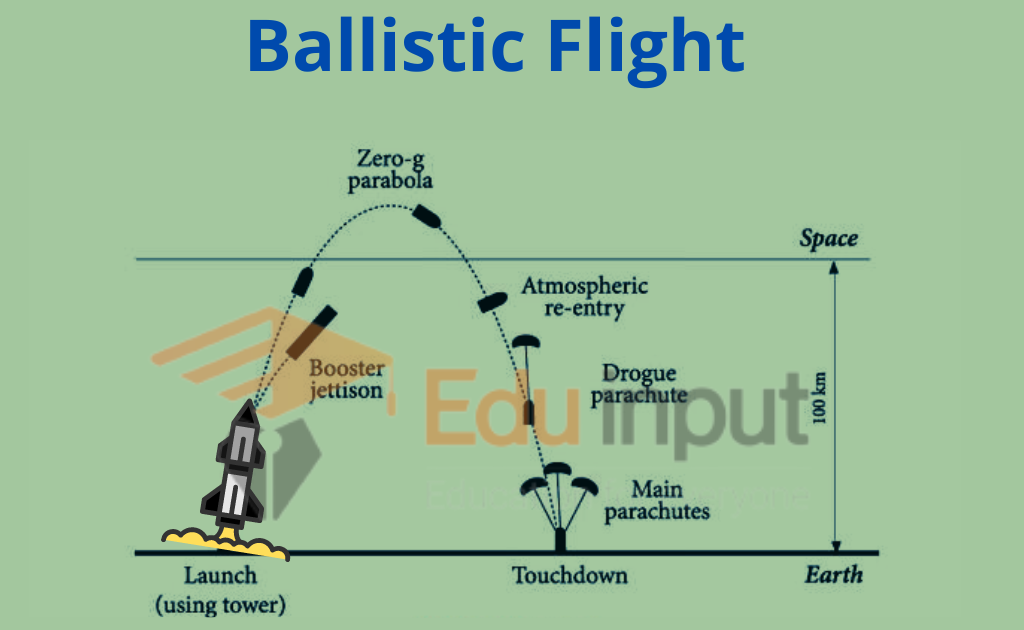Ballistic Missiles-Definition, History, And Flight
A ballistic missile is a type of rocket that flies to a target using a curved path like a ball, it only has power for a short time and mostly uses gravity. Short-range missiles stay within the Earth’s atmosphere, while long-range missiles fly outside the atmosphere. These are different from cruise missiles, which are guided by air currents and stay within the Earth’s atmosphere.
Ballistic Missiles
A ballistic missile is a type of rocket that is guided and follows a curved path to reach its target. It carries a powerful explosive and can travel long distances. It can be launched from various platforms such as airplanes, ships, submarines, and on land.
History of Ballistic Missiles
Ballistic missiles are weapons that are fired through the air and can travel long distances. The first kind of ballistic missile was used a long time ago, in the 13th century, and was based on a type of flying device called a rocket. In ancient China, they also used a similar weapon called the Huolongchushui in wars on ships.
In the 20th century, a man named Wernher von Braun made a new type of ballistic missile called the A-4, also known as the V-2. This missile was first launched in 1942 and was used in the war in 1944 to attack cities in France and England. By the end of World War II, a lot of V-2 missiles had been used.
Another important type of ballistic missile is called an intercontinental ballistic missile, which can travel even farther than the V-2. In the past, countries like the United States and Russia had a lot of these missiles, but they made an agreement to reduce the number they had in 2017.
Ballistic Flight
The flight of a ballistic missile involves several stages. Initially, the missile is launched from its launch pad using a rocket propulsion system. Once it reaches a certain altitude, the rocket’s engines shut off, and the missile begins its “free-flight” phase. During this phase, the missile is in a state of weightlessness and is guided by its internal navigation system.

Next, the missile’s reentry vehicle, which contains the warhead, separates from the rest of the missile and begins its descent toward the target. During the descent, the reentry vehicle encounters intense friction and heat due to the air molecules in the atmosphere. The reentry vehicle is designed to withstand these conditions and protect the warhead.
Finally, the reentry vehicle reaches the target area, and the warhead is released. The warhead then detonates, causing the intended damage. The entire flight from launch to impact typically takes around 30 minutes to an hour, depending on the range of the missile.
It is important to note that ballistic missiles are not always used for destructive purposes and can also be used for peaceful purposes, such as launching satellites into orbit.
The motion of Ballistic Missiles
The motion of the ballistic missile is the result of the combined effect of two independent motions.
- A straight-line inertial flight in the direction of launch
- A vertical gravity fall
By the law of inertia, an object should flow straight off in the direction thrown, at a constant speed equal to the initial speed, particularly in empty space. But the downward force of gravity will alter the straight path into a curved trajectory. Its motion is projectile motion.
The trajectory of Ballistic Missiles
For short ranges and flat earth approximation, the trajectory is parabolic. For Spherical Earth approximation, the drag-less ballistic trajectory should actually be elliptical.
At high speed and for long trajectories the air friction is not negligible and sometimes the force of air friction is more than gravity. It affects both horizontal as well as vertical motions. Therefore it is completely unrealistic to neglect the aerodynamic forces.
Shooting a Missile
The shooting of a missile on a selected distant spot is a major factor of warfare. It undergoes complicated motions due to air friction and wind etc. As a result, the angle of projection cannot be found by the geometry of the situation at the moment of launching.
The actual flights of missiles are worked out to high degrees of precision and the results were contained in tabular form. Ballistic missiles are useful only for short ranges. For long ranges and greater precision, powered and remote control-guided cruise missiles are used.

 written by
written by 





Leave a Reply